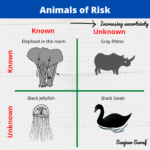According to the FAA, there have been 113 battery fire incidents on passenger and cargo planes between 1991-2010. There is a battery fire incident every two months in the airline industry.
Batteries as Weapons?
Airline industry is concerned that terrorists could use such batteries to create a fire by putting together a slew of batteries. Is this a credible scenario?
Irrespective of the answer, looking at the frequency of incidents and the concern amongst airlines and passengers, you will see some new rules about batteries on planes.
How About Check-In Batteries?
A lithium battery can be deliberately set on fire but a lithium batteries can spontaneously catch fire. Checking-in the batteries can lead to fire in the cargo compartment. In February 2006, a cargo hold fire destroyed a UPS jet at Philadelphia airport.
Luckily the majority of the airline battery fire incidents have not resulted in severe consequences. But think about applications where a large amount of lithium batteries are required – e.g. electric or hybrid cars, cable boxes, grid storage.
If we are worried about cell phone and laptop batteries, what about crash-worthiness of a battery operated car?
In addition to controling quality at battery manufacturing phase to minimize fire risks , consideration has to be given to battery fires during operation and handling.






4 Responses
We agree there is a public safety need to mitigate fire hazards associated with advanced Li-ion batteries, particularly when carried onboard aircraft in passengers’ luggage, or when large numbers of such batteries are shipped in densely packed arrays placed inside various types of containers stored in aircraft cargo holds during flight.
Interestingly, our company has applied specialized theoretical knowledge on a practical level to try to understand the underlying causes of certain anomalous fires and explosions that occasionally occur in smaller lithium-ion batteries as well as in large multi-battery packs. In doing so, we have uncovered what may be a new class of potentially serious, previously unrecognized safety risks arising from Lithium metal dendrite structures that can ‘grow’ over time inside Li-ion batteries. A new paper by academic researchers published in May 2010 supports our deep concerns about the involvement of dendrites in catastrophic Li-ion battery failures (please see R. Bhattacharyya et al., “In situ NMR observation of the formation of metallic Lithium microstructures in Lithium batteries,” Nature Materials 9 pp. 504 – 510). Details of our thoughts on this new source of concern have been publicly released in a 68-slide technical presentation on SlideShare.net titled, “Low Energy Neutron Reactions (LENRs) in Advanced Batteries and Other Condensed Matter Environments — Could LENRs be involved in some Li-ion battery fires?” See URL
I have been told on mmore than once that we in Australia, are not to mail Li-ion batteries overseas even if it is not inside the phones. I understand the risk but can one explain how is it possible for people living outside Australia to mail mobile phones with the Li-ion batteries in the box but not inside the phones itself?
It makes no sense.
Also there are digital cameras that use the same batteries but are excluded from the list of prohibited items.
Is the risk only confined to phones even if the batteries are NOT inside the phones itself?
I believe if we are all genuinely concerned with safety, it would seem hazardous posting these items or carrying phones using Li-ion batteries on planes.
It would seem that we can either replace these batteries with batteries that pose no such danger or find a case that keep the batteries dry. What about including silica gel along with phones hen posting them overseas? Would that help?
We could look at the following and see if this also makes sense!
We can’t post phones along with the li-ion batteries on flights overseas but we can do that domestic?
Also we can carry these phones with the batteries inside the phones on flights overseas and in many cases the phones are turned on.
If we are concerned about terrorism, shouldn’t we apply the same theory all round? If a terrorist wants to do some damage, they do not need to go so far but use a mobile phone with the battery inside and in the pocket of a passenger.
Last, we should ban phones where the batteries are built into the unit such as in iPhones. It is asking for trouble, one we can without.
Thank you.
Anil
Rules and regulations covering carrying or shipping of Lithium-ion batteries on aircraft, whether promulgated and enforced by government or private organizations, can often be wildly inconsistent and in some cases nonsensical, as you have correctly noted. I cannot speak as a regulator, but from a technological standpoint the risk of large damaging or dangerous thermal events is vastly smaller with one or two AA or AAA Li-ion batteries found in portable electronic devices as compared to the much higher-electrical-capacity multicell Li-ion battery packs found in laptop computers and worst of all, huge packs for electric vehicles (containing thousands of cells) that (sometime in the future) could conceivably be shipped in cargo holds of aircraft. The scale and dangerousness of rare thermal runaway events increases dramatically with the number of cells inside a single battery pack (e.g., 5 – 6 in a laptop), or number of cells in a closely-packed shipping configuration (e.g., many thousands of AA cells riding on a pallet inside an aircraft cargo hold). A Li-ion thermal runaway event in a single handheld electronic device can be a nuisance, but will not kill people or threaten the integrity of an aircraft. By contrast, a single thermal runaway event inside a large, densely-packed collection of Li-ion batteries can result in a chain reaction of cell-to-cell thermal fratricides that create an extremely hot, almost impossible to extinguish, metal-oxygen chemical fire. That sort of large-scale thermal event can easily overwhelm existing fire suppression systems and compromise the structural integrity of very large aircraft. Lewis larsen, President and CEO, Lattice Energy LLC